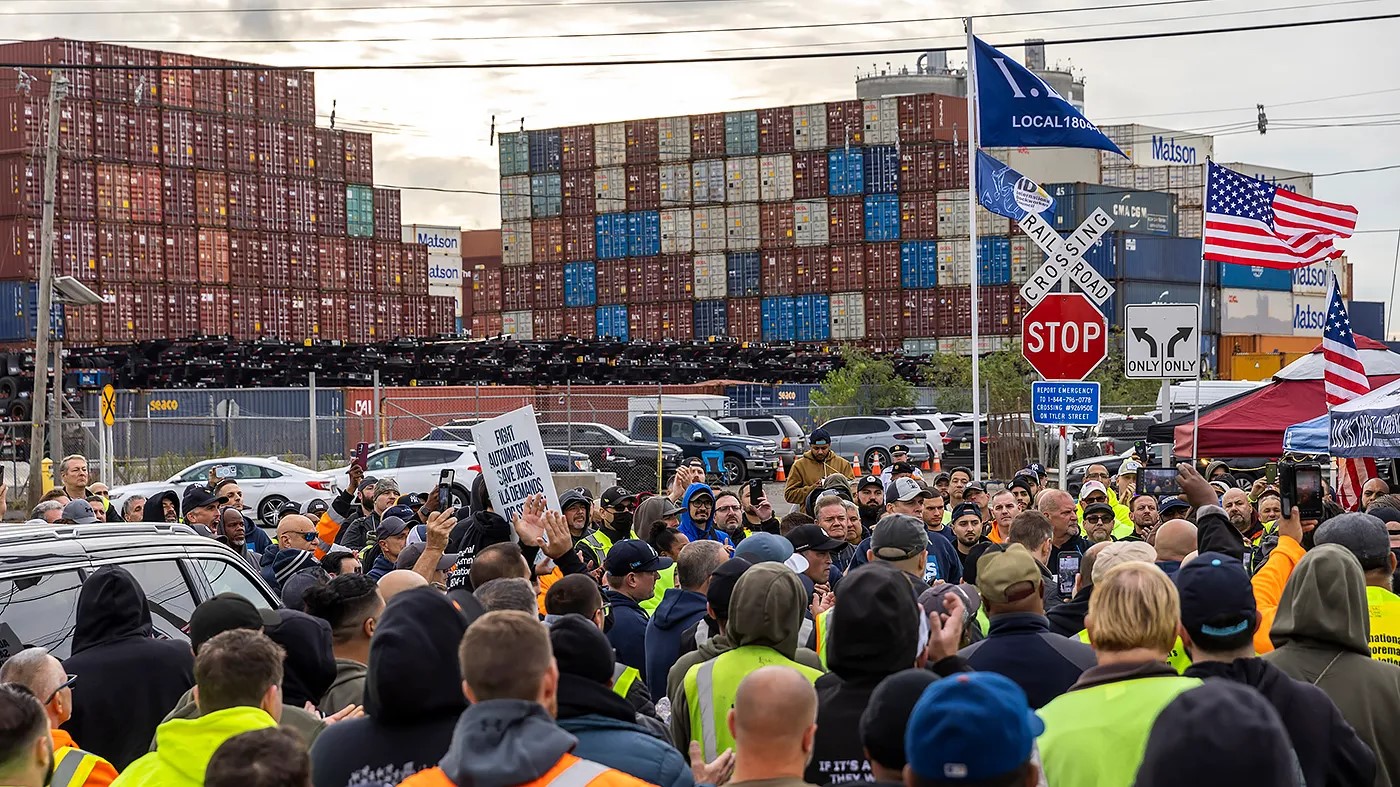New York – A major labor dispute that halted operations at critical U.S. ports appears to be nearing resolution as the International Longshoremen’s Association (ILA) and the United States Maritime Alliance (USMX) reached a tentative agreement on wage increases. The deal, announced late Thursday, allows dockworkers to return to work as early as Friday morning, signaling a potential end to a four-day strike that had disrupted the flow of goods across the country.
At the heart of the tentative agreement is a wage increase of $4 per hour for each of the next six years, resulting in a cumulative 62% raise over the duration of the contract. The first year alone would see a wage increase of more than 10% on the current top hourly rate of $39. The deal is seen as a significant victory for the dockworkers, many of whom had argued that their wages had not kept pace with the profitability of the shipping industry, which has experienced record earnings in recent years.
While the agreement is still subject to ratification by the union’s membership, both sides have expressed optimism that the deal will be approved. The current contract, which expired earlier this week, has been extended until January 2025, allowing time for the final details to be worked out.
Political Support for the Deal
President Joe Biden was quick to applaud the tentative agreement, commending the efforts of both the ILA and the USMX to reach a deal. In a statement, Biden emphasized the importance of securing a strong contract that reflects the contributions of dockworkers, particularly during the pandemic.
“Today’s tentative agreement on wage increases marks a major milestone for the hardworking dockworkers who have kept our ports running through some of the toughest times. I congratulate the ILA and the USMX for their commitment to finding a fair solution,” Biden said.
The President’s administration had faced growing pressure to intervene in the strike, with some business groups calling on the government to invoke the Taft-Hartley Act to end the walkout. However, Biden, who has consistently expressed support for labor unions, declined to use this authority, instead encouraging both sides to reach an agreement through collective bargaining.
Acting Secretary of Labor Julie Su played a pivotal role in the negotiations, meeting with both parties in New Jersey and helping to mediate the discussions. Su, who had been instrumental in securing a labor deal for West Coast dockworkers in 2023, brought her experience to bear once again, guiding the ILA and USMX toward compromise on key issues.
Supply Chain Disruptions
The strike, which began on Tuesday, quickly sent shockwaves through the U.S. economy, with major retailers warning of potential shortages of essential goods. Ports along the East and Gulf Coasts were forced to halt operations, leaving cargo ships stranded offshore and delaying the delivery of products ranging from electronics to foodstuffs.
Retailers, in particular, had expressed concern about the timing of the strike, which came just as businesses were preparing for the crucial holiday shopping season. With supply chains already stretched thin, the walkout raised fears that prolonged disruptions could lead to rising prices for consumers.
Economists had warned that the strike’s impact could exacerbate inflationary pressures, particularly if it dragged on for weeks or months. The U.S. shipping industry, which saw profits surge to unprecedented levels during the pandemic, faced criticism for not acting sooner to address the workers’ demands for higher wages.
In addition to the wage increase, the tentative agreement also addresses other key issues raised by the union, including concerns about working conditions and benefits. ILA President Harold Daggett, who had initially pushed for an even larger wage increase, expressed satisfaction with the deal, calling it a fair compromise that would benefit both workers and the shipping industry as a whole.
Remaining Challenges
Despite the progress made in the negotiations, challenges remain. The tentative agreement still needs to be ratified by the union’s membership, a process that could take several weeks. While union leadership has voiced its support for the deal, it is not uncommon for rank-and-file members to reject contracts they believe do not go far enough in meeting their demands.
If the agreement is rejected, the strike could resume, plunging the U.S. port system back into disarray. The last major port strike in the U.S., which took place on the West Coast in 2015, caused billions of dollars in economic losses and took months to fully resolve.
For now, businesses and consumers alike are hoping that the tentative agreement marks the beginning of the end of this labor dispute. The return to work by dockworkers will provide much-needed relief for retailers and manufacturers that depend on the smooth operation of the country’s ports to keep their supply chains intact. As the U.S. economy continues to recover from the effects of the pandemic, labor disputes such as this one underscore the vital role that dockworkers play in keeping the flow of goods moving. The next few weeks will be critical in determining whether this tentative deal can provide the stability that both the shipping industry and the broader economy so desperately need.











